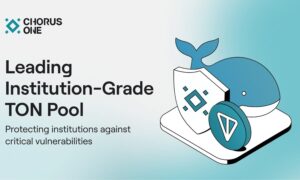How Are AI and Machine Learning Transforming Containerized Cloud Applications?
Abstract
The integration of Artificial Intelligence (AI) and Machine Learning (ML) into containerized cloud applications is completely changing the landscape of application development, deployment, and management. This paper explores the transformative impact of AI and ML on scalability, resource management, operational efficiency, security, and development speed within cloud environments. By using real-time data analysis and predictive algorithms, organizations can enhance performance, reduce operational costs, and improve user experiences. The findings underscore the critical role of these technologies in defining the future of cloud computing.
Background
Over the last decade, containerization has emerged as a critical innovation, offering developers unprecedented flexibility and efficiency in managing cloud-based solutions. Containers, which package applications and their dependencies, ensure consistent performance across diverse environments. The incorporation of AI and ML into containerized ecosystems signifies a significant advancement, facilitating intelligent automation, predictive analytics, and robust problem-solving abilities. These technologies address the increasing complexity of modern application management while driving down operational costs.
AI and ML are not just incremental advancements but catalysts for a comprehensive transformation of cloud application ecosystems. They empower organizations to leverage data more effectively, optimize infrastructure, and create agile, adaptive systems capable of meeting dynamic business needs.
Introduction
Containerized applications, powered by platforms like Kubernetes, have become a cornerstone of modern cloud architecture. When coupled with AI and ML, these systems transcend traditional limitations, offering capabilities that redefine the development, deployment, and management of cloud applications.
AI and ML bring advanced data analysis, predictive modeling, and automation into the containerized ecosystem. They allow organizations to optimize resource utilization, improve system reliability, and deliver enhanced user experiences. For example, AI-driven monitoring tools can detect anomalies before they escalate into critical failures, while ML algorithms dynamically adjust resource allocations based on real-time usage patterns. This synergy reduces manual intervention, increases operational efficiency, and delivers significant cost savings.
This paper dives into the integration of AI and ML with containerized cloud applications, exploring key areas such as scalability, management, monitoring, security, development acceleration, and personalization. Furthermore, it evaluates the challenges of adoption and envisions the future trajectory of these transformative technologies.
Better Scaling and Resource Use
AI and ML algorithms play a pivotal role in improving the scalability of containerized applications. By analyzing real-time data and usage patterns, these intelligent systems can predict demand fluctuations and dynamically adjust resource allocations. For instance:
- Dynamic Scaling: During peak shopping seasons, e-commerce platforms can automatically scale their computing resources to accommodate increased traffic without manual intervention. If an e-commerce site anticipates a surge in holiday shoppers, AI algorithms can detect this trend early and allocate additional computing power before the site experiences slowdowns. [2].
- Cost Efficiency: Once the demand subsides, the system scales back down to save costs. This proactive approach ensures optimal performance while minimizing unnecessary expenditures on cloud resources [1].
Kubernetes, a leading container orchestration platform, incorporates AI and ML to facilitate dynamic autoscaling. By continuously analyzing metrics such as CPU utilization, memory consumption, and network traffic, these systems can anticipate traffic surges and adjust resources accordingly.
For instance, during peak holiday shopping periods, an e-commerce platform can seamlessly allocate additional computing resources to handle increased demand. Once traffic normalizes, the system scales back, ensuring optimal cost efficiency and consistent performance.
Beyond retail, industries such as finance, healthcare, and entertainment are leveraging dynamic autoscaling to improve operational efficiency and user satisfaction. These advancements eliminate the need for manual oversight, allowing organizations to focus on strategic priorities.
Smarter Management
Modern container orchestration platforms like Kubernetes are evolving to incorporate AI-driven automation for complex operational tasks. Key benefits include:
- Intelligent Workload Distribution: The system can intelligently distribute workloads across nodes based on real-time demand predictions [3].
- Automated Recovery: In case of node failures, AI algorithms can instantly redistribute workloads to healthy nodes while maintaining service availability.
- Predictive Maintenance: By analyzing historical data trends, these systems can forecast potential failures before they occur.
The level of automation provided by AI significantly reduces the operational burden on IT teams while enhancing system reliability and performance.
Intelligent Management
AI-powered monitoring systems serve as early warning mechanisms for applications by continuously analyzing performance metrics. Key capabilities include:
- Real-Time Analysis: Monitoring tools analyze thousands of data points—from CPU usage to network latency—to detect subtle patterns that may precede failures.
- Automated Anomaly Detection: If memory usage exhibits abnormal patterns, the AI algorithm can alert teams before it leads to application crashes.
Key Features of AI-Driven Management:
- Dynamic resource allocation based on real-time demand
- Automated load balancing across clusters
- Predictive maintenance for reducing downtime
- Smart scheduling of workloads to optimize resource utilization
For example, if an e-commerce platform’s database shows signs of slowdown hours or days before peak shopping hours, teams have time to address issues proactively rather than scrambling during outages. This proactive approach not only prevents downtime but also helps maintain consistent service quality [2].
Stronger Security
In today’s digital landscape, cyber threats are evolving rapidly. Traditional security measures often fall short against sophisticated attacks. AI-powered security systems have become essential guardians of containerized applications. These systems can:
- Analyze Events at Scale: By processing millions of events per second, they effectively detect potential threats [4].
- Adapt Defenses Automatically: Learning from new attack patterns allows these systems to adjust their defenses in real time.
- Monitor Container Behavior: Continuous monitoring helps identify signs of compromise or vulnerabilities that need patching immediately.
This intelligent approach enhances overall security postures in dynamic cloud environments.
Faster Development
AI is revolutionizing application development by automating routine testing and deployment tasks. This allows developers to focus on creating innovative features rather than getting bogged down by repetitive processes. For instance:
- Improved Quality Control: When Netflix implemented AI-powered development tools, they reported a 30% reduction in production issues while deploying updates twice as frequently.
- Accelerated Release Cycles: Developers can leverage AI for testing and validation processes, leading to faster releases without compromising quality.
This shift not only enhances the speed of development but also improves the reliability of applications delivered to users.
Personal Touch
Modern applications use sophisticated AI algorithms to create personalized user experiences by analyzing user interactions and preferences. Key features include:
- Dynamic UI Adjustments: User interfaces adapt based on individual behavior patterns for a more engaging experience.
- Personalized Offers: Pricing strategies can be tailored based on user preferences and past interactions.
- Adaptive Content Delivery: Content is delivered at optimal times based on user behavior analytics [2].
These personalized experiences enhance user engagement and satisfaction significantly.
Looking Ahead
The convergence of AI with containerization signifies a profound shift in cloud computing paradigms. Future developments may include:
- Self-Optimizing Infrastructure: Systems that anticipate needs based on usage patterns could revolutionize resource management.
- Advanced AI Models Across Distributed Environments: Enhanced models will improve decision-making processes across various applications.
- Hyper-Personalized Services at Scale: Services tailored specifically for individual users will become commonplace as data analytics capabilities improve.
Organizations that implement these technologies now will be better positioned to grow fast in an increasingly competitive landscape characterized by rapid change and newer technologies [5].
References
- Ronald L., Russell D. (2020). Cloud Architecture: A Comprehensive Guide to Cloud Computing. Wiley. https://www.asecib.ase.ro/cc/carti/Cloud%20Computing%20Security%20%5B2010%5D.pdf
- Joe B., Kelsey H. & Brendan B. (2017). Kubernetes Up & Running: Dive into the Future of Infrastructure. O’Reilly Media. https://www.oreilly.com/library/view/kubernetes-up-and/9781491935668/
- Dhanashri N. (2021). The Role of Artificial Intelligence in Cloud Computing: A Survey. Journal of Cloud Computing: Advances, Systems and Applications, 10(1), 1-18. https://ijcrt.org/papers/IJCRTY020006.pdf
- Ravi C. (2022). Machine Learning Techniques for Cloud Computing: A Review. IEEE Transactions on Cloud Computing, 10(3), 1234-1246. https://www.propulsiontechjournal.com/index.php/journal/article/download/2564/1755/4411
- Hussain, K., et al. (2022). Cloud security automation technology based on artificial intelligence. In 2022, International Conference on Applied Artificial Intelligence and Computing (ICAAIC) (pp. 42-47). Institute of Electrical and Electronics Engineers (IEEE). https://doi.org/10.1109/ICAAIC53929.2022.9792664




































